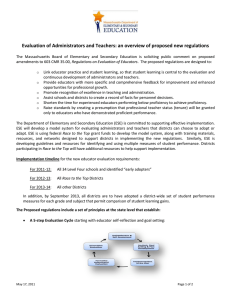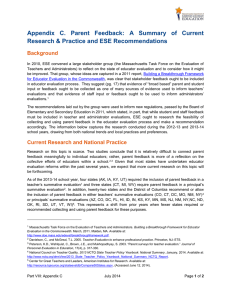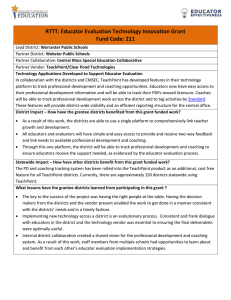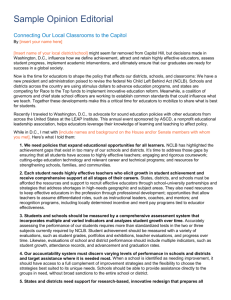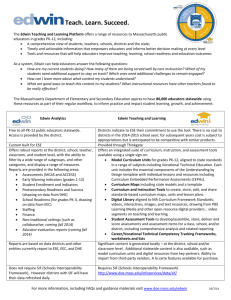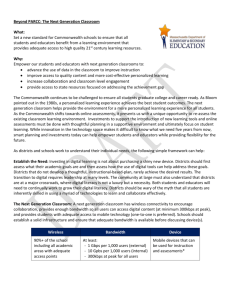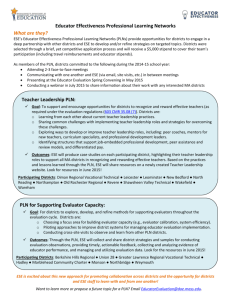Evaluation of Administrators and Teachers: an overview of proposed
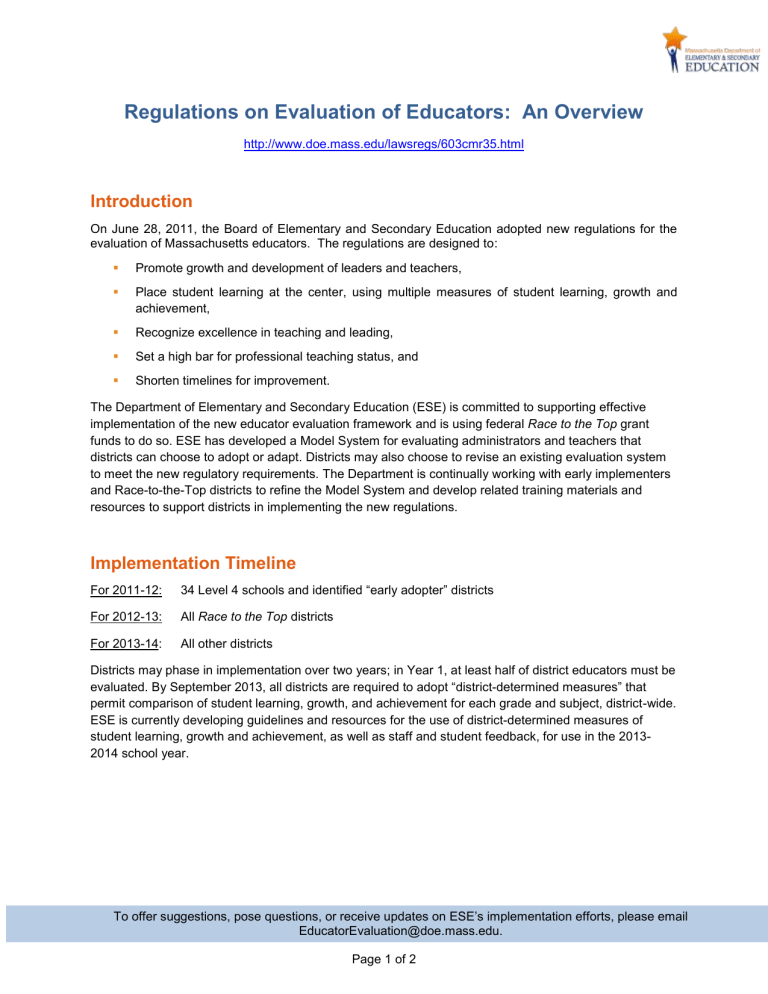
Regulations on Evaluation of Educators: An Overview
http://www.doe.mass.edu/lawsregs/603cmr35.html
Introduction
On June 28, 2011, the Board of Elementary and Secondary Education adopted new regulations for the evaluation of Massachusetts educators. The regulations are designed to:
Promote growth and development of leaders and teachers,
Place student learning at the center, using multiple measures of student learning, growth and achievement,
Recognize excellence in teaching and leading,
Set a high bar for professional teaching status, and
Shorten timelines for improvement.
The Department of Elementary and Secondary Education (ESE) is committed to supporting effective implementation of the new educator evaluation framework and is using federal Race to the Top grant funds to do so. ESE has developed a Model System for evaluating administrators and teachers that districts can choose to adopt or adapt. Districts may also choose to revise an existing evaluation system to meet the new regulatory requirements. The Department is continually working with early implementers and Race-to-the-Top districts to refine the Model System and develop related training materials and resources to support districts in implementing the new regulations.
Implementation Timeline
For 2011-12: 34 Level 4 schools and identified “early adopter” districts
For 2012-13: All Race to the Top districts
For 2013-14: All other districts
Districts may phase in implementation over two years; in Year 1, at least half of district educators must be evaluated. By September 2013, all districts are required to adopt “district-determined measures” that permit comparison of student learning, growth, and achievement for each grade and subject, district-wide.
ESE is currently developing guidelines and resources for the use of district-determined measures of student learning, growth and achievement, as well as staff and student feedback, for use in the 2013-
2014 school year.
To offer suggestions, pose questions, or receive updates on ESE’s implementation efforts, please email
EducatorEvaluation@doe.mass.edu.
Page 1 of 2
Regulatory Requirements to Inform the Collective Bargaining Process
1. 5-Step Evaluation Cycle
Step 1: Self-Assessment
Step 2: Analysis, Goal Setting & Plan
Development
Step 3: Implementation of the Plan
Step 4: Formative Assessment/Evaluation
Step 5: Summative Evaluation
2. Statewide Standards of Effective Practice
Principals & Other Administrators
Instructional Leadership
Management and Operations
Family & Community Partnerships
Professional Culture
Teachers
Curriculum, Planning, & Assessment
Teaching All Students
Family & Community Engagement
Professional Culture
3. Three Categories of Evidence
Multiple measures of student learning, growth and achievement, including MCAS where available; judgment based on observations, including unannounced observations; and additional evidence relating to performance
4. Four Performance Levels (Exemplary, Proficient, Needs Improvement, Unsatisfactory)
Determinations of educator performance levels incorporate evidence from artifacts, observations, measures of student learning and achievement, and staff or student feedback.
5. Four Educator Plans
Self-Directed Growth Plan (1 or 2 years in duration, for experienced educators)
Directed Growth Plan (up to 1 year in duration, for experienced educators)
Improvement Plan (up to 1 year in duration, for experienced educators)
Developing Educator Plan (up to 1 year in duration, for new educators)
6. Three Impact Rating Levels (high, moderate, or low)
Educator impact on student learning is based on trends and patterns in student performance measures including growth data from statewide assessments such as MCAS or ACCESS, when available, and district-determined measures.
To offer suggestions, pose questions, or receive updates on ESE’s implementation efforts, please email
EducatorEvaluation@doe.mass.edu.
Page 2 of 2

